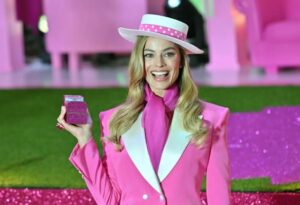Barbie In The Boardroom: Bringing Feminine To The Table
Originally published by Shelley Zalis for Forbes
As a young girl, I loved Barbie. Dressing her was fun and I marveled at all the choices of clothing and accessories. It wasn’t until years later that I realized the full impact she would have on me. She radiated femininity and confidence. I now call that grace with grit. The crazy thing is…early in my career as a corporate research executive, I downplayed my own femininity, as most women did until I had THAT Barbie moment. My moment of truth. I attended a meeting with a very powerful woman. She was dressed like Barbie. I was dressed like Ken. I pulled my hair from its tight ponytail and let it cascade out. From that point on, I embraced my feminine and brought empathy, vulnerability, compassion and emotion to the boardroom. I recognized that the soft powers are the essential powers. You don’t have to be a girly girl and splash pink all over, but there’s also no reason to hide it. I did not need to act or dress like a man to succeed in business. I became Barbie in the boardroom. Sarah Jessica Parker said it best, “Trying to be a man is a waste of a woman.”
During a fireside chat with Richard Dickson, President and Chief Operating Officer from Mattel, Inc. we discussed Barbie’s comeback and the incredible momentum behind the brand, including the movie Barbie premiering this week. While not Ken, he is the other man behind Barbie.
In 2014, the Barbie brand was in crisis having hit its lowest volume and lowest scores with moms and girls. The brand had lost its cultural relevance.
With any legacy brand it’s vital to go back to the origin story to understand what made it great to begin with. Founder Ruth Handler had created Barbie to inspire her daughter and friends to imagine a world of possibilities, to play out their imaginative future selves in various different roles and careers that didn’t exist in 1959 for girls or women. Barbie was much bigger as an idea than a product itself. Handler’s breakthrough doll catapulted her career and she became the first president of Mattel, a company she had co-founded with her husband and their partner, in a role she held for over 30 years.
What had gone wrong so many decades later? Barbie wasn’t reflecting how the world looked. It was very one-dimensional. Feedback from moms was that Barbie wasn’t inspirational or aspirational for their daughters.
Of course her body isn’t attainable, she’s an 11 and a half inch doll and she isn’t human, but now there are choices. Today, under Dickson’s leadership, the brand has 24 different skin types, hair colors and tones that reflect the world we live in. There are nine different body types. Barbie™ is the most inclusive and diverse doll line on the planet with 175 different looks and representative of those with disabilities, so everyone can find a doll that represents them. Mattel moved from a monologue to a dialogue to address the issue.
The work itself was not only important from a cultural relevance perspective, but has been inspirational for their team of creators to know they’re making a difference in people’s lives. The letters, the calls, “the confessions” they receive about the meaning of these dolls to their owners is more inspiring than any paycheck someone receives.
With a 65-year legacy, Barbie continues to inspire the limitless potential for girls. “We have a lot more work to do in closing the gap to inspire girls to believe they can achieve anything a boy can – it’s what we call the ‘dream gap’. We do it through play, we do it in a fun way,” said Dickson.
It’s hard to believe that Barbie has never had a movie. That’s about to change.The excitement and pent up demand is a milestone moment for the brand, with a star-studded cast that includes Margot Robbie, Will Ferrell, Rita Arya, Simi Liu, Nicola Coughlin, American Ferrera and Issa Rae, directed by Greta Gerwig.
“It’s a big, bold comedy with heart. And clearly female empowerment will prevail,” shared Dickson. “It was important that we had a diverse and inclusive cast, and of course, there will be surprise appearances. Margot Robbie is the epitome of the stereotypical Barbie look, but as the movie reveals itself, the underlying message is we are all Barbie and Barbie is us. She is a canvas we look at, a mirror image of what we are as people, and her journey is one of human truth.”
Representation matters. From role model to real life, Barbie is a reflection of girls in all corners of the world. She is empowering change for a new generation and reawakening our nostalgia to believe that we can do or be anything we want. Let’s dream big and shatter the glass ceiling. That’s the ultimate dream house. See you in the boardroom, Ken (wink)!
